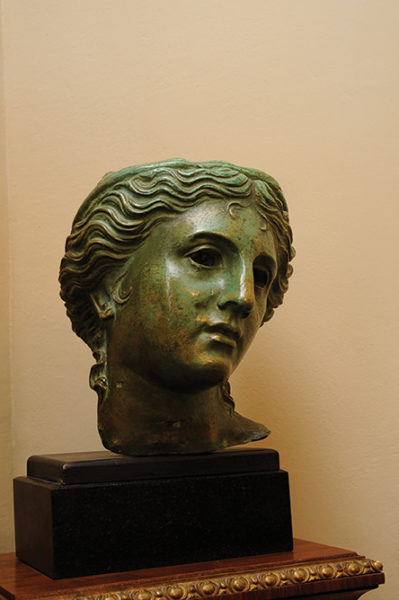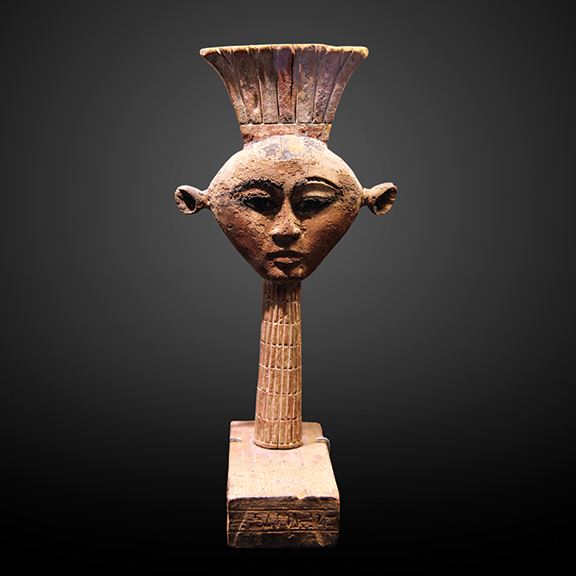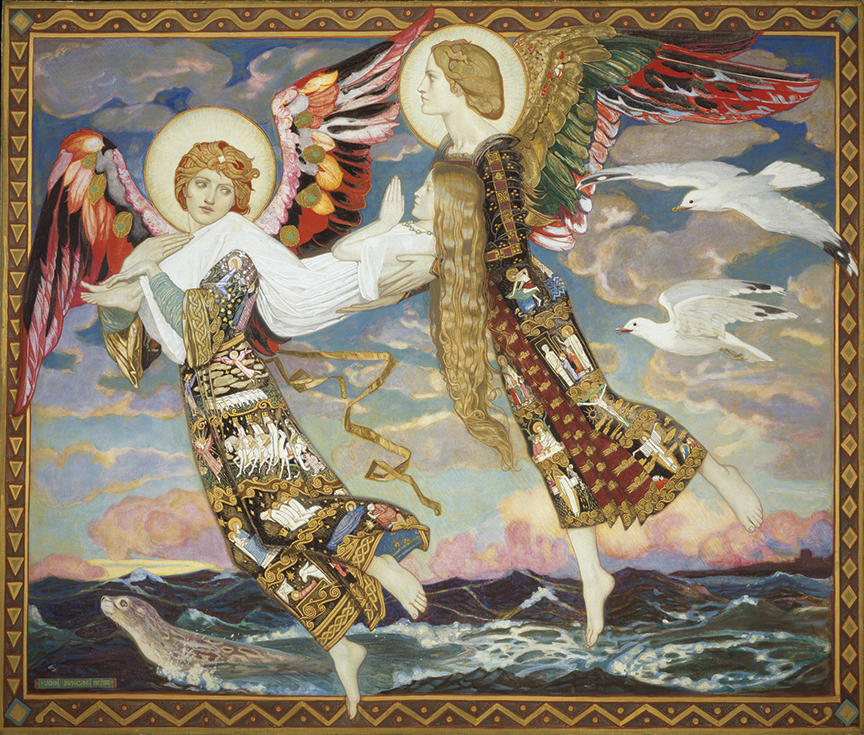Water is crucial to all life on Earth, and from the earliest records of human history we have venerated its healing and regenerative powers. It is no surprise that many healing water deities are goddesses: the life-giving, wellness-nurturing properties of water are often associated with the feminine, and one can easily draw both biological and poetic parallels between the waters of the womb and of the world. Cultures all over the world tell stories of water goddesses who provide blessings of wellness to their supplicants.
Brigid
In Ireland, it is hard to walk for an hour without encountering a holy well devoted to St. Brigid, one of the country’s patron saints. But in earlier times, those wells were devoted to a Celtic goddess also named Brigid, sometimes spelled Bride or Brid. (All three spellings are predecessors of the name Bridget.) In both her Celtic and Christian incarnations, Brigid presides over thresholds—including the threshold moments of birth and death—healing, fertility, and motherhood. Brigid’s feast day is February 1st, Imbolc on the Celtic calendar: the midpoint between winter and spring, and the time when pregnant sheep and cattle come into their milk. One of St. Brigid’s most famous miracles was her ability to turn bathwater into beer—a valuable gift indeed in times when fermented beverages were often far safer to drink than contaminated water. There are tales of her performing this miracle at least twice at leper colonies where she did the healing work that brought her sainthood.
To this day, supplicants bring candles and coins to Brigid’s wells, especially the most famous sites in Kildare and Clare, to ask for healing and protection for themselves and their children. It is still said that reciting the genealogy of St. Brigid daily will keep the speaker from harm. And if you leave a piece of clothing hanging outside overnight on Imbolc eve, wearing it will keep you well and ward off sickness for the coming year.
Aredvi Sura Anahita

Before converting Armenia to Christianity in AD 301, the nation’s king Tiridates the Great was devoted to “the great lady Anahit … the benefactress of the whole human race, mother of all knowledge.” Anahit is the Armenian goddess of fertility, healing, wisdom, and water. She parallels the Indo-Iranian cosmological figure Anahita, known as the divinity of the waters, who similarly represented healing and fertility. Scholars often trace both figures back to the Mesopotamian Ishtar. Anahit is both a goddess of water and a human representation of a life-giving river: she is a great spring that pours water from heavenly sources down onto the earth, quenching dry air and providing sustenance and plenty to all countries, and she is called “the life-increasing, herd-increasing, fold-increasing.”
Jengu
Jengu are mermaid-like spirits associated with the Sawa people of Cameroon. They are said to reside in both fresh and salt water, and are often described as having beautiful gap teeth and long hair. Jengu bring good fortune to their followers, especially fishermen, and they also act as healers and as intermediaries between the human and spirit worlds, occupying a liminal, inter-world space that echoes the shoreline between water and land, as well as their half-fish, half-human forms. A Jengu cult is still active among the Duala people, and the Jengu offer four major blessings to their followers: crayfish, an end to the rainy season, victory in races, and protection from disease. Initiation into the Jengu cult is part of a girl’s coming of age into womanhood among the Bakweri people of Mount Cameroon, and many Jengu rituals revolve around a secret society; however, anyone may make sacrifices or gifts to the Jengu before traveling, especially by water, as a request for safety and wellness on their journey.
Anuket

Anuket’s name means “the embracer,” and she is the ancient Egyptian goddess of the southern portions of the Nile, whose two branches represented her outflung arms offering fertility and prosperity to the people who dwelled on the riverbanks. She offered her worshippers protection in childbirth and in the hunt, and was often depicted in the form of a gazelle. The annual Festival of Anuket was held when the Nile began to flood, and her titles are directly associated with the blessings that came with that yearly inundation: “Nourisher of the Fields,” “Giver of Life,” and “She Who Shoots Forth.” (The darker aspect of the Nile’s flooding is acknowledged in another of her names: “She Who Strangles.”) In earlier depictions, Anuket is a maiden goddess, but in the time of the New Kingdom she is depicted suckling the pharaoh, and later on she became a goddess of lust.
The fluidity of Anuket’s role in the pantheon, her mutability between maiden, mother, and lover, echoes the liminal space between human and spirit worlds occupied by the Jengu, Aredvi Sura Anahita’s place as a watery bridge from heaven to earth, and Brigid’s power over thresholds.
There are innumerable healing goddesses associated with individual springs and wells all over the world, from the Hamorawan Lady in Borongan in the Philippines, to Coventina in Carrawburgh in northern Britain, to the Sanctuary of Our Lady of Lourdes, France. Water has been crucial to human wellness from the beginning of time, always both life-giving and potentially deadly. The wellness and blessings these goddesses offer are as fluid and shifting, perhaps as contradictory, as water itself. ◆
